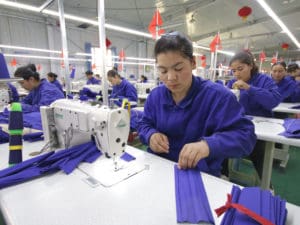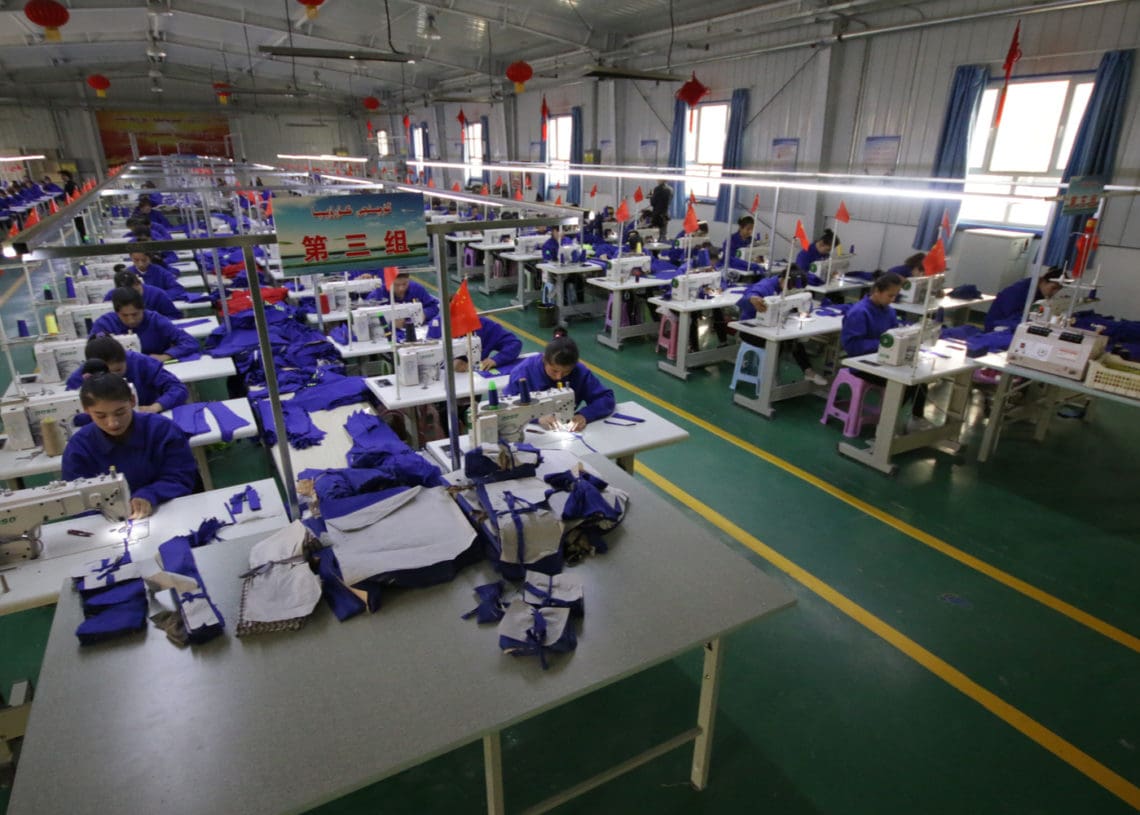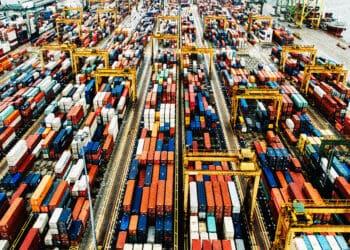New forced-labor requirements related to Xinjiang and a three-fold increase in enforcement by U.S. Customs have raised the risk of supply chain disruptions and penalties for U.S. importers. How should companies go about proving the negative: that their supply chains are forced-labor free?
Today, CBP announced 5 Withhold Release Orders on goods from China produced with state-sponsored forced labor in Xinjiang where the Chinese gov't is engaged in systemic human rights abuses against the Uyghur people & other ethnic & religious minorities: https://t.co/dxk3cSdXIS pic.twitter.com/M3P7jBEn07
— CBP (@CBP) September 14, 2020
Products that are mined, produced or manufactured using forced labor cannot be imported into the United States per Section 307 of the Tariff Act of 1930. While this has been the law for nearly a century, the ongoing situation in the Xinjiang Uyghur Autonomous Region of China – as related by increasing media reports of state-sponsored forced labor and other abuses, and involving a steady shift in consumer sentiment toward greater consideration of such international humanitarian issues – has brought this age-old prohibition to the forefront of American business and supply chain considerations.
Over the past year, these developments have prompted U.S. lawmakers and agency officials to institute stricter enforcement measures aimed at identifying shipments that may contain finished products or components that were created in Xinjiang using forced labor. These moves, which appear to be just the beginning of a bipartisan shift toward demanding increased accountability from U.S. businesses for what occurs at each step of their production processes, necessitate a proactive response from business leaders who seek to avoid supply interruptions, negative media coverage, government enforcement actions and ultimate losses of market share and profits brought on by lapses in compliance.
A parallel effort is underway to educate and compel private sector stakeholders to revamp their import compliance programs and supply chain due diligence practices to conform to these more stringent requirements and avoid penalties or unanticipated delays and costs associated with bringing their products to market. Customs and Border Protection (CPB), the agency tasked with enforcing the prohibition against the importation of products created using forced labor, has thus far spearheaded this effort. But while the effort is ongoing, in the short term, the ramp up in regulation and enforcement has left U.S. importers — from large multinational corporations with complex multi-country supply chains to industry-specific manufacturers of niche products that source raw materials or other inputs from Xinjiang — in the lurch.
In the face of broadly worded requirements and spotty guidance, business leaders are left wondering if they have devoted sufficient time, effort and resources into setting up and managing their supplier relationships and records. From a business perspective, the goal of each compliance professional and corporate officer tasked with addressing these new forced labor requirements should be to ensure that they have compiled the documentary evidence and instituted the checks and procedures necessary to demonstrate that their company is in continued compliance. They should also maintain a commitment to eradicate such abusive practices from their supply chains. To that end, the following sections provide an overview of relevant requirements and key considerations for business leaders grappling with how to address these growing compliance challenges.
Prohibitions and Enforcement Trends
The main tool used by the U.S. to enforce the prohibition against the importation of products made using forced labor is the Withhold Release Order (WRO). WROs are issued by CBP when available evidence reasonably indicates that a company, industry or region uses forced labor.
WROs issued by U.S. Customs instruct personnel at all ports of entry to detain any shipments that fall within their scope. If a shipment is detailed pursuant to a WRO, the importer of that shipment has the option of exporting the goods or providing CBP with proof that the shipment is admissible (i.e. that the allegedly offending goods included in the shipment were actually not mined, produced, or manufactured using forced labor). If the requisite proof is not provided to CBP within three months or if CBP deems that the proof of admissibility that is provided is not sufficient, the goods may be excluded from entry, seized and forfeited.

The use of WROs by CBP in general as well as the use of WROs to specifically address the situation in Xinjiang has spiked over the past few years. The overwhelming majority of WROs currently in force apply to Chinese entities and products, and of these, 11 apply to goods made using forced labor in Xinjiang.
Most notably, earlier this year U.S. Customs issued a region-wide WRO prohibiting the importation of all products that are derived, in whole or in part, from cotton or tomatoes produced in Xinjiang. Until this WRO was issued, CBP’s Xinjiang-related WROs were entity-specific, not region-wide. However, this WRO is much broader in that it prohibits all imports containing cotton and tomatoes from Xinjiang, regardless of the particular entities involved in the supply chain. The prohibition covers all downstream products that contain Xinjiang-origin cotton or tomatoes, including apparel, textiles, tomato seeds, canned tomatoes and tomato sauce. Importantly, it covers such downstream products regardless of what country they were shipped from or produced in, so long as they incorporate an input derived from Xinjiang-origin cotton or tomatoes.
More recently, Customs issued a WRO on all silica-based products from Xinjiang-based Hoshine Silicon Industry Co. Ltd. and its subsidiaries. The U.S. Department of Commerce concurrently added Hoshine and four other Chinese entities to its entity list, prohibiting exports to these entities without a license. These moves target China’s largest producer of metallurgical-grade silicon, which is used in the production of photovoltaic cells and semiconductors that in turn are components in solar panels and electronics. Just as in the case of the region-wide WRO covering cotton and tomato products, the Hoshine WRO covers all downstream products containing silica-based inputs from Hoshine regardless of where they are produced or shipped from.
For U.S. importers in the solar, silicon and related tech industries like electronics, the Hoshine WRO means that they must be ready to demonstrate that their silica-based imports were not made by Hoshine and do not contain any inputs made by Hoshine. Proving a negative (i.e. that something is not the case) is generally far more challenging than affirming a fact. To boot, U.S. Customs employs a high standard, requiring “clear and convincing evidence” that the products in question were not made (and do not include inputs made) by Hoshine using forced labor.
The further difficulty with proving that products are forced-labor-free is that there is not yet comprehensive guidance on exactly what documentation is required to prove that forced labor is absent from the supply chain. But it is clear that doing nothing to address these new due diligence obligations exposes U.S. importers to unnecessary risk and could lead to significant supply chain bottlenecks going forward. Over the past year, detentions by CBP pursuant to WROs have tripled, and Congress is expected to pass the Uyghur Forced Labor Prevention Act, which would prohibit the importation of all products from Xinjiang absent sufficient proof that their supply chains are free of forced labor.
If CBP begins detaining a company’s shipments pursuant to a WRO before the company has traced and documented its supply chain, the potential for long-term and recurring delays, not to mention the potential for inadvertent violations of the prohibition against importing items created using forced labor and associated public relations troubles, greatly increases. From both a legal and public relations perspective, responding to the current climate and harbingers of even stricter legislation by proactively updating your company’s import compliance program and supply chain due diligence procedures to account for these new requirements is the best way to ensure a positive working relationship with U.S. Customs and long-term importing success.
Guidance and Key Compliance Considerations
Thus far, CBP has issued a series of answers to frequently asked questions regarding both the region-wide Xinjiang cotton and tomato WRO and the Hoshine silica-based products WRO. On the other hand, earlier this year, multiple CBP rulings (used as guidance by importers) discussing how CBP treated specific forms of documentary proof of a forced-labor-free supply chain were issued, then quickly pulled by U.S. Customs with little explanation as to why they were retracted.
This hesitancy to issue further guidance suggests that things may remain uncertain for some time, during which plenty of gray area will remain, allowing CBP to assess proof of forced-labor-free supply chains on a case-by-case basis based on its discretion. In light of this uncertainty, the following points should guide business leaders’ efforts to ensure compliance with these new forced labor requirements:
Trace Your Supply Chains Now
CBP expects all importers to have a comprehensive understanding of their supply chains: from sourcing of raw materials to subcontracting manufacturing to the assembly of finished goods destined for the U.S. Ideally, this includes understanding and documenting the role of each partner entity involved, its location(s), its ownership structure up to and including its ultimate owner, and the origin of all the inputs it provides. If possible, a direct contact at each such partner entity should be established as a resource in the event additional information beyond what is maintained in your companies’ records is requested by CBP.
Establish Procedures to Continually Compile Required Documentation in the Regular Course
Written policies and procedures should be implemented to make sure all company employees understand that ensuring forced-labor-free supply chains is company policy and a company priority. Such procedures should include a code of conduct and best practices that relate to identifying and immediately addressing potential instances of noncompliance as well as front-end onboarding procedures that require vetting of new partners to confirm and document compliance. All such policies and procedures should be incorporated into an import compliance manual, explained in periodic company-wide import compliance training and updated based on periodic independent audits.
Establish Relationships/Expectations With Upstream Partners
Ideally a direct contact at each supply chain partner should be established from the onset and maintained throughout the business relationship. You should make each partner aware of your company’s unequivocal commitment to maintaining a forced labor free supply chain by incorporating terms that prohibit the use of forced labor in contracts; conducting onsite production visits; requiring the provision of certifications, questionnaires and standard company, production and origin information as a prerequisite for doing business; and periodically requesting updates to these materials.
Serving Multiple Business Purposes
It is undoubtedly difficult to determine the appropriate amount of company resources to devote to an overarching issue like preventing forced labor at all steps of your global supply chains and similarly challenging to convince the board of directors that associated expenditures are in the best interest of the company. In striving to do so, keep in mind that supply chain due diligence related to eradicating the use of forced labor is not only a legal obligation — it should be an indispensable part of your company’s corporate governance, with the potential to bolster both the company’s public image and bottom line.



 Doreen M. Edelman is the chair and founder of the Global Trade & Policy practice at Lowenstein Sandler. She has more than 30 years of experience advising clients on the risks associated with export controls, customs matters and U.S. sanctions in cross-border M&A and investment transactions, and on the compliance requirements pertaining to technology, software, defense articles and services, and commercial goods.
Doreen M. Edelman is the chair and founder of the Global Trade & Policy practice at Lowenstein Sandler. She has more than 30 years of experience advising clients on the risks associated with export controls, customs matters and U.S. sanctions in cross-border M&A and investment transactions, and on the compliance requirements pertaining to technology, software, defense articles and services, and commercial goods. Andrew Bisbas is counsel at Lowenstein Sandler. His practice centers on US Customs and Border Protection import requirements and tariffs. He helps clients navigate CBP requirements including classification and country of origin determinations as well as USMCA and other trade agreement implications. Andrew also assists clients in setting up and maintaining corporate import compliance programs, conducting import audits and supply chain due diligence, preparing and submitting prior disclosures to US Customs, and advising on tariff engineering and supply chain structuring efforts geared towards mitigating tariff costs.
Andrew Bisbas is counsel at Lowenstein Sandler. His practice centers on US Customs and Border Protection import requirements and tariffs. He helps clients navigate CBP requirements including classification and country of origin determinations as well as USMCA and other trade agreement implications. Andrew also assists clients in setting up and maintaining corporate import compliance programs, conducting import audits and supply chain due diligence, preparing and submitting prior disclosures to US Customs, and advising on tariff engineering and supply chain structuring efforts geared towards mitigating tariff costs.









